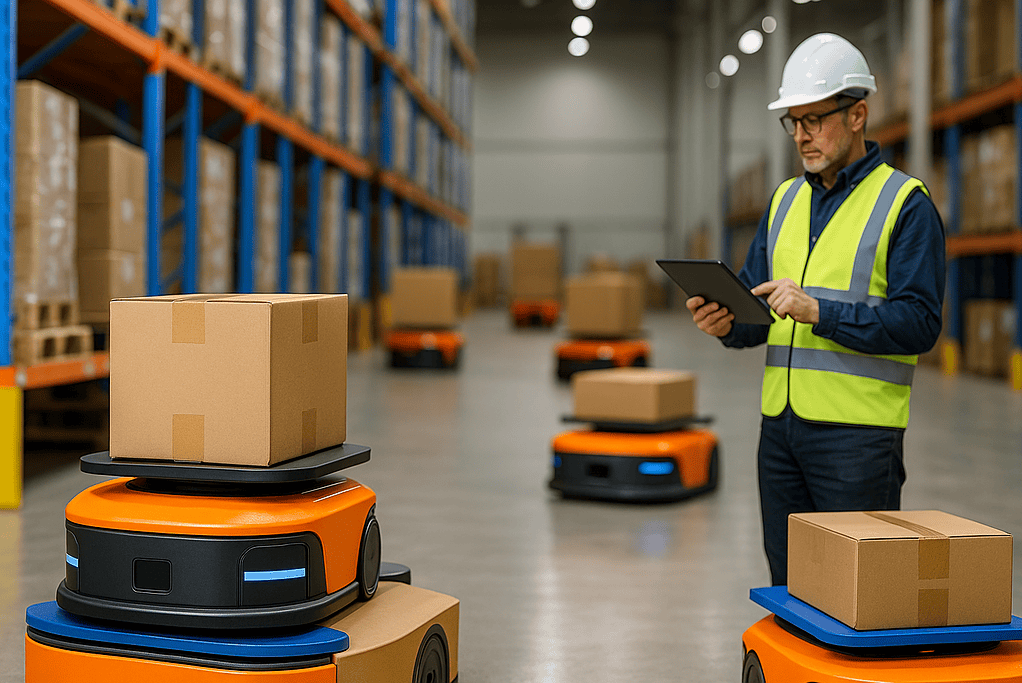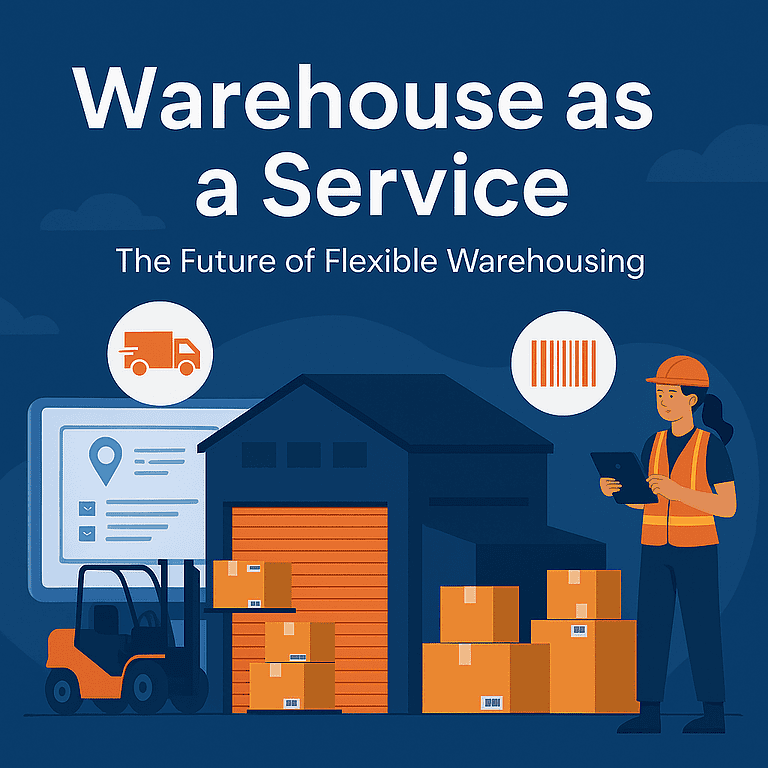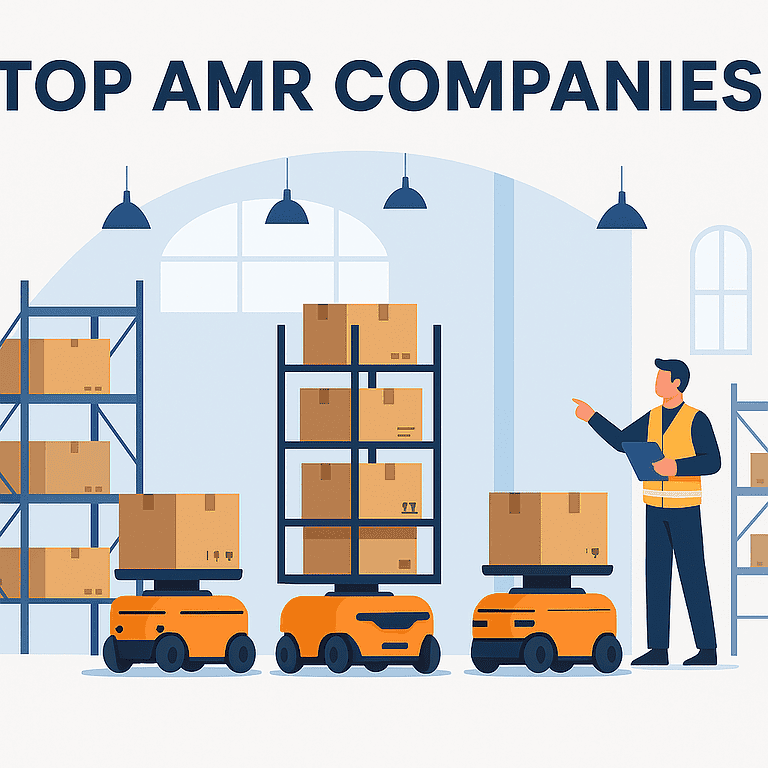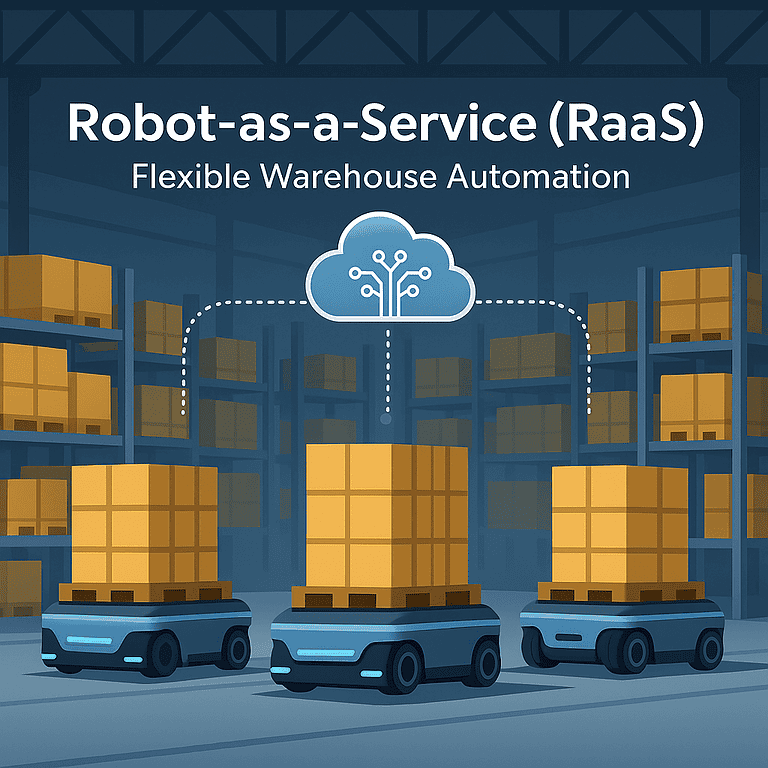Robot-as-a-Service Vendors: Who You Need to Know
Robot-as-a-Service vendors are reshaping warehouse automation by making robotics accessible without heavy capital investment. Instead of buying robots outright, warehouses can now “subscribe” to automation — paying only for what they use. This model is attracting high-value vendor interest because it solves labor challenges, reduces upfront costs, and scales easily as operations grow.

How Robot-as-a-Service (RaaS) Works
Vendors provide autonomous mobile robots (AMRs), robotic arms, or picking robots on a subscription basis.
Warehouses pay monthly or per-task fees, avoiding large capital expenditure.
Vendors handle deployment, software updates, maintenance, and support.
Contracts can scale up or down depending on seasonal or long-term demand.
Benefits of Working with RaaS Vendors
Lower Upfront Costs – No need to buy, maintain, or depreciate expensive robotics equipment.
Faster ROI – Start saving on labor and improving efficiency immediately.
Scalability – Add more robots during peak season, scale down when demand slows.
Vendor Support – Maintenance, upgrades, and AI improvements are built into the service.
Risk Reduction – Flexibility reduces the risk of being locked into outdated technology.
What to Look for in a Robot-as-a-Service Vendor
Industry Experience – Proven track record in warehouse and logistics environments.
Integration Capabilities – Ability to connect with WMS/WES platforms.
Support & SLAs – Clear commitments on uptime, response times, and performance.
Scalability – Ability to add or redeploy robots as business needs change.
Data & Security Compliance – Ensures robotics systems align with IT and cybersecurity standards.
Examples of Robot-as-a-Service Vendors
Locus Robotics – AMRs for order fulfillment.
Fetch Robotics (Zebra Technologies) – Flexible fleet management.
6 River Systems (Shopify) – Collaborative robots for picking.
Vecna Robotics – Autonomous material handling systems.
Conclusion
Warehouse leaders are taking a close look at Robot-as-a-Service vendors because the model blends the flexibility of automation with the financial efficiency of subscription services. As labor challenges and demand volatility continue, RaaS is positioned as one of the highest-value vendor opportunities in warehouse automation.






